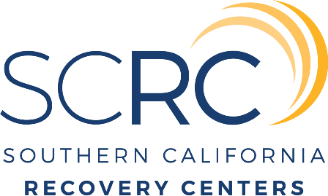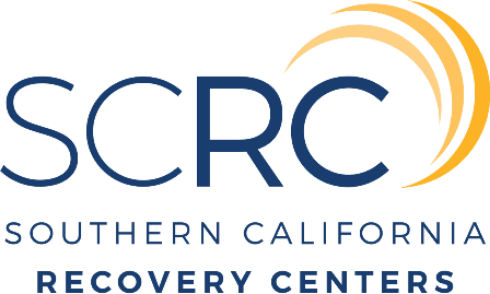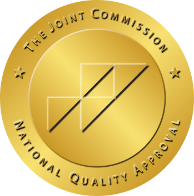Navigating the Complex World of Opioid Treatments
Understanding the Opioid Epidemic
The opioid epidemic has pervaded communities across the nation, creating a significant public health crisis. These potent drugs, including both prescription opioids and illicit substances such as heroin and fentanyl, have led to a surge in addiction and overdose fatalities. Opioid use disorder affects individuals from all walks of life, demanding a robust and multifaceted response to curb its spread. Understanding the mechanisms of drug addiction is crucial for developing effective treatment plans and ensuring a comprehensive approach to recovery. This epidemic underscores the need for specialized care facilities like Southern California Recovery Centers, which provide vital services necessary for effective opioid dependency treatment in South California.
Key Differences Between Heroin and Fentanyl
Heroin and fentanyl, both opioids, differ significantly in terms of potency and risk. Fentanyl is synthetically manufactured and is considerably more potent than heroin, often leading to an increased risk of overdose and severe withdrawal symptoms. Heroin, while also highly addictive, generally requires larger quantities to achieve the same level of effect as fentanyl. These drugs’ potency levels necessitate unique treatment approaches, as the fentanyl detoxification programs provided by recovery centers in Southern California illustrate. This nuanced understanding of the substances involved in addiction allows practitioners to tailor treatments that effectively target the specific challenges posed by each drug.
Why Treatment Approach Matters
The approach taken in treating addiction significantly influences outcomes, making personalized addiction therapy pivotal. In Southern California opioid recovery, varied treatment strategies have proven effective, integrating evidence-based methods like Methadone and Suboxone medication-assisted treatment with emotional therapy for comprehensive care. Identifying the appropriate treatment can mitigate the risk of relapse and improve long-term recovery prospects. Personalized treatment in South California considers individual circumstances, focusing on an integrated approach to opioid addiction rehabilitation, which emphasizes addressing the root causes of addiction, including co-occurring disorders. Therefore, choosing the right treatment approach is essential in navigating the complexities of opioid dependence, ultimately facilitating a lasting recovery.
The Science Behind Opioid Dependence
Mechanisms of Addiction: Heroin vs Fentanyl
Understanding the mechanisms of drug addiction is crucial for addressing opioid dependency effectively. Both heroin and fentanyl impact the brain’s reward system, reinforcing compulsive drug-seeking behavior. However, fentanyl’s synthetic nature allows it to bind more quickly and powerfully to opioid receptors, accelerating addiction progression. Heroin, derived from morphine, also binds to opioid receptors but generally takes a longer path to addiction due to its natural origins. This distinction underscores the need for targeted heroin addiction treatment in Southern California, adapting approaches to specific addiction pathways.
Potency and Risks: A Comparative Analysis
Fentanyl far surpasses heroin in potency, posing immediate risks of overdose, even in small doses. This heightened danger necessitates advanced detoxification protocols, such as those used in fentanyl detox programs. Heroin’s potency, while serious, typically allows for slightly more leeway in dosage before fatal risks emerge. Yet, its addictive nature should not be underestimated, as dependency develops swiftly with continued use. Consequently, understanding each drug’s biochemical interactions helps practitioners craft effective, personalized recovery strategies, informed by fentanyl substance information.
The Role of Neurotransmitters in Opioid Dependency
Opioids like heroin and fentanyl alter neurotransmitter activity, particularly concerning dopamine release, influencing pleasure and reward pathways in the brain. By artificially enhancing dopamine levels, they create a powerful cycle of dependency and withdrawal. Recognizing this process is essential for implementing opioid dependence education and crafting effective pharmacotherapies. Both heroin use and effects and fentanyl trigger similar neurotransmitter responses, but fentanyl’s potency necessitates a more sophisticated approach to treatment. This knowledge informs modern strategies in addiction rehabilitation, ensuring nuanced, individualized care.
Crafting Personalized Pathways to Recovery
Evidence-Based Addiction Therapies
At the forefront of substance abuse recovery, understanding and implementing evidence-based addiction therapies is crucial. Southern California Recovery Centers (SCRC) leverages advanced, research-backed methods to guide individuals along their recovery journey. In personalized addiction therapy, experts use techniques that have been rigorously tested to ensure effective outcomes for those battling opioid addiction. Among these therapeutic modalities, cognitive-behavioral therapy (CBT), motivational interviewing, and contingency management stand out, offering structured ways to alter behavior and thought patterns. By focusing on scientifically validated methods, recovery centers in South California provide individuals with the tools necessary to overcome the challenges posed by heroin and fentanyl dependency, facilitating long-term recovery.
MAT Strategies: Methadone vs Suboxone
Medication-assisted treatment (MAT) forms a cornerstone of modern opioid dependency management, particularly concerning heroin and fentanyl treatment. This approach combines traditional therapy with pharmacological support, using drugs like Methadone and Suboxone to mitigate withdrawal symptoms and reduce cravings. Methadone, a long-acting opioid agonist, has been a mainstay in heroin addiction treatment, stabilizing patients as they gradually taper off opioids. Conversely, Suboxone, a combination of buprenorphine and naloxone, provides a safer profile with reduced abuse potential, often preferred in fentanyl treatment due to its ceiling effect. By tailoring MAT strategies to individual needs, recovery centers in Carlsbad and Dana Point enhance treatment efficacy, offering a pathway to sustainable sobriety through pharmacotherapy for opioid addiction.
Integrating Emotional Therapy into Recovery
In the intricate world of opioid addiction, integrating emotional therapy into recovery processes is essential. Emotional therapy addresses the psychological aspect of addiction, delving into issues like trauma, stress, and co-occurring mental health disorders. SCRC emphasizes emotional therapy through cutting-edge treatments, such as Eye Movement Desensitization and Reprocessing (EMDR), which helps clients process and recover from trauma. By incorporating effective therapeutic practices, such as understanding EMDR therapy in recovery, centers create a safe environment for individuals to explore emotional triggers. This holistic approach ensures that clients are not only combating the chemical dependency of heroin and fentanyl but also healing emotionally, ultimately leading to a more comprehensive and enduring recovery.
Navigating Treatment Modalities
Detoxification Protocols: A Comprehensive Guide
Detoxification stands as the foundational phase in heroin and fentanyl treatment, setting the stage for a successful recovery journey. Given the high potency of these opioids, detox protocols need to be meticulously crafted to safely manage withdrawal symptoms. Southern California Recovery Centers (SCRC) implements integrated opioid addiction rehabilitation techniques tailored to each individual. These protocols often involve medically supervised detox, utilizing medications to ease withdrawal while ensuring safety. A well-structured detox phase paves the way for comprehensive treatment, creating a stable foundation upon which further therapeutic interventions can build.
Moreover, the detox process must be compassionate and supportive, minimizing discomfort for the patient. It is crucial to address both the physical and psychological facets of withdrawal, thereby offering a holistic approach to detoxification. This comprehensive guide to detox emphasizes the importance of a personalized strategy that aligns with the complexity of opioid dependency. By prioritizing patient needs and safety, recovery centers lay the groundwork for sustained abstinence and healing.
Inpatient vs Outpatient Care: Making the Right Choice
Choosing between inpatient and outpatient care is a critical decision in the addiction rehabilitation process. Inpatient addiction care in California offers an immersive environment where individuals can focus entirely on recovery without external distractions. This intensive form of treatment is particularly beneficial for severe cases of opioid dependency, providing round-the-clock support and monitoring. On the other hand, outpatient care provides greater flexibility, allowing individuals to maintain daily responsibilities while progressing through their treatment regimen.
Southern California Recovery Centers caters to varying needs through both inpatient and outpatient options, ensuring customized care. The decision between these modalities depends on the severity of addiction, support system availability, and individual preferences. Clients can benefit from the structured discipline of inpatient programs or the adaptable nature of outpatient services. Ultimately, the goal is to create a supportive and effective treatment landscape that fosters lasting sobriety and personal growth.
The Importance of Peer Support in Rehabilitation
Peer support plays a pivotal role in opioid recovery, offering a sense of community and shared understanding among individuals navigating similar challenges. Engaging with peer support groups can significantly enhance the recovery process by providing encouragement, accountability, and shared experiences. This camaraderie fosters an environment where clients feel supported and understood, enhancing motivation and reducing feelings of isolation.
Southern California Recovery Centers prioritize alumni networks and peer connections as vital components of the rehabilitation process. By participating in peer support programs, individuals in recovery can draw strength from others’ successes and struggles, creating a collective path toward healing. The bonds formed within these groups not only aid in immediate recovery efforts but also establish a lasting network that supports long-term sobriety. Thus, incorporating peer support into treatment plans enhances the holistic recovery journey, ensuring individuals have the resources and resilience needed to overcome addiction.
Advanced Strategies for Long-Term Sobriety
Relapse Prevention Tactics
In the journey toward long-lasting sobriety, implementing effective relapse prevention strategies is essential. For individuals recovering from heroin or fentanyl addiction, understanding triggers and stressors that can lead to relapse is imperative. Southern California Recovery Centers emphasize personalized content that incorporates psychological education, coping strategies, and robust support networks. By utilizing relapse prevention strategies, clients are equipped with tools to maintain sobriety. Techniques such as mindfulness practices, cognitive restructuring, and regular therapy sessions form a protective barrier against relapse, ensuring individuals can navigate challenges successfully.
Enhancing relapse prevention involves continual assessment of the client’s environment and relationships, which might contribute to relapse triggers. In Southern California, recovery centers integrate comprehensive relapse prevention methods tailored to each individual’s lifestyle and circumstances. This approach includes encouraging clients to engage in positive social activities and build rewarding hobbies that replace the void once filled by substance use. Additionally, frequent check-ins with recovery coaches maintain accountability and reinforce commitment to a drug-free life.
Addressing Co-occurring Disorders
Successfully managing co-occurring disorders is vital for sustainable addiction recovery. Many individuals suffering from opioid dependency also grapple with mental health issues such as depression, anxiety, or PTSD. Southern California Recovery Centers provide integrated treatment plans that simultaneously address addiction and mental health concerns. This dual diagnosis approach ensures that clients receive comprehensive care, identifying and treating all facets of their health issues using the most effective methods.
Recognizing the complex relationship between opioid addiction and mental health disorders leads to more precise interventions. Therapy options, such as cognitive-behavioral therapy and dialectical behavior therapy, are customized to tackle both the psychological and physiological symptoms associated with co-occurring disorders. By deploying a multi-pronged strategy, recovery centers in South California can foster substantial improvements in mental health, ultimately enhancing the recovery process and reducing the risk of relapse.
A Holistic Approach to Substance Abuse Recovery
Adopting a holistic approach to substance abuse recovery transforms treatment into a comprehensive journey focused on healing the mind, body, and spirit. Techniques employed by Southern California Recovery Centers draw from a myriad of disciplines, ensuring a well-rounded therapeutic experience. Approaches such as meditation, yoga, and nutritional counseling complement traditional addiction therapies, fostering an environment where healing can thrive.
The SCRC’s holistic treatment methods integrate clinical excellence with alternative therapies, offering a balanced approach that considers each client’s unique needs. Incorporating body-centered modalities like mindfulness and biofeedback enhances emotional regulation and cognitive clarity. These practices help clients reconnect with their bodies, developing a deeper understanding of how emotions impact their addiction.
Holistic recovery strategies also emphasize life skills education and vocational training, preparing individuals for sustainable, fulfilling lives post-treatment. By addressing all aspects of well-being, from psychological to spiritual, recovery centers ensure clients have the tools and resilience necessary for enduring sobriety.
Harmonizing Modern Medicine with Compassionate Care
Opioid Harm Reduction Strategies
Incorporating opioid harm reduction strategies is paramount in addressing the challenges posed by substance abuse. These strategies aim to reduce the negative consequences associated with opioid use, focusing on safety and informed decision-making. At Southern California Recovery Centers, experts implement a variety of overdose prevention techniques, such as providing access to naloxone and educating clients on safe usage practices. Harm reduction does not condone drug use; instead, it seeks to minimize harm and support users in achieving healthier lifestyles. Techniques such as needle exchange programs and supervised consumption sites have been shown to effectively reduce the health risks associated with opioid dependence, offering an empathetic approach to recovery.
In the broader scope, harm reduction extends beyond immediate safety measures. It encourages stigmatization reduction and fosters a supportive community for individuals struggling with addiction. By incorporating these strategies, recovery centers create a comprehensive treatment plan that is both progressive and compassionate. Through education, accessibility, and community engagement, individuals are empowered to take control of their recovery journey, ultimately leading to sustained sobriety.
Chronic Pain Management in Recovery
Chronic pain management is a critical aspect of recovery for many individuals who turn to opioids for relief. Recognizing the intersection between chronic pain and addiction, Southern California Recovery Centers provide holistic approaches that prioritize non-opioid pain management techniques. These include physical therapy, acupuncture, and cognitive-behavioral strategies aimed at altering pain perception. By addressing the underlying causes of chronic pain, patients can experience relief without resorting to potentially addictive medications.
Moreover, personalized treatment in South California acknowledges that every individual’s pain and recovery journey is unique. A combination of clinical and alternative therapies effectively targets both physical and emotional pain, promoting healing and rehabilitation. Educating patients about the risks associated with opioid use for pain management is crucial, as is providing viable alternatives that enhance quality of life. This integrative approach ensures that individuals at Southern California Recovery Centers can manage chronic pain while pursuing a drug-free lifestyle.
The Role of Personalized Addiction Therapy
Personalized addiction therapy plays an essential role in harmonizing modern medicine with compassionate care. At Southern California Recovery Centers, individualized treatment plans are crafted to suit the specific needs and circumstances of each client, ensuring effective and sustainable recovery. This approach allows professionals to address both the physiological and psychological facets of addiction, integrating fentanyl rehabilitation insights with broader therapeutic modalities.
Through personalized addiction therapy, clients can engage in one-on-one counseling, group sessions, and specialized trauma-informed care. Such therapies focus on each individual’s unique triggers and coping mechanisms, promoting long-term change. By employing evidence-based methods alongside innovative techniques, therapists can guide clients through a successful recovery journey. The attentive, tailored nature of personalized therapy fosters trust and cooperation, empowering clients to take charge of their healing process and achieve lasting sobriety.
Emerging Solutions and Future Directions
Innovations in Fentanyl Detox Programs
In the evolving landscape of opioid treatment, fentanyl detox programs are at the forefront of innovation. The introduction of cutting-edge techniques in detoxification protocols offers new hope to individuals struggling with fentanyl addiction. These innovations in opioid treatment integrate advanced medical interventions with personalized care plans, ensuring a holistic recovery experience. The key lies in the ability to swiftly address the acute withdrawal symptoms associated with fentanyl use, utilizing medication-assisted treatment that is tailored specifically to the needs of the individual.
Furthermore, Southern California Recovery Centers have pioneered methods that combine traditional detox procedures with novel therapies to enhance patient comfort and treatment efficacy. Utilizing a collaborative approach that involves medical professionals and therapeutic experts, these programs emphasize patient safety and well-being during detoxification. Enhanced monitoring and the strategic use of supportive medications contribute to a smoother transition from active addiction to a stable recovery path. Such transformative programs exemplify modern advancements in handling opioid addiction’s complexity and promise substantial improvements in recovery outcomes.
The Promise of Nasal Sprays for Overdose Intervention
Nasal sprays have emerged as a promising tool in the arsenal against opioid overdose, offering a rapid response option that can save lives. Naloxone nasal sprays are increasingly deployed as part of emergency intervention strategies for overdoses, especially pertinent in cases involving potent substances like fentanyl. With ease of use and fast-acting properties, these sprays are becoming a standard component of harm reduction packages distributed in communities at high risk for opioid fatalities.
The growing availability of nasal sprays for overdose intervention reflects a broader commitment to innovation in emergency care practices at Southern California Recovery Centers. Their implementation not only empowers bystanders and first responders but also plays a crucial role in bridging the gap between overdose crisis intervention and formal medical treatment, as explored in innovative insights for SCRC’s outpatient excellence. The simplicity of administration allows for immediate action, dramatically reducing the window for fatal outcomes. Providing such tools within addiction treatment frameworks reinforces a commitment to saving lives while supporting broader recovery efforts.
The Evolving Landscape of Opioid Crisis Solutions
As the opioid crisis continues to challenge public health systems, novel solutions are reshaping the landscape of addiction treatment and recovery support. These solutions range from technological advancements in treatment delivery to policy shifts advocating for integrative care models. Emerging paradigms emphasize comprehensive strategies that address not only the physiological dependency on opioids but also the psychological and social factors that contribute to addiction.
In Southern California, initiatives are underway to incorporate technology-enhanced care, such as mobile applications for recovery management and telehealth counseling. These tools offer unprecedented access to resources and support, facilitating ongoing engagement in recovery practices. Additionally, increased focus on Dana Point treatment facilities and other specialized centers within the region underscores the importance of environment-specific interventions.
Policy changes are also instrumental in creating a more favorable landscape for recovery. Efforts to decriminalize substance use, expand access to treatment options, and increase funding for harm reduction programs are gaining momentum. Collectively, these evolving strategies signify a shift toward a more empathetic and effective response to the opioid epidemic, laying the groundwork for sustained progress in combating addiction and enhancing public health.
Conclusion: Forging a New Horizon in Opioid Treatment
Recapping Key Insights
Understanding the profound differences between heroin and fentanyl is a crucial step in formulating effective treatment strategies. Tailored approaches that recognize the unique potency and risks associated with each drug are essential in combating opioid addiction effectively. From the science behind opioid dependence to advanced strategies for long-term sobriety, each aspect of treatment plays a vital role in overcoming addiction, as outlined in the guide to successful veteran recovery at SCRC. Southern California Recovery Centers exemplify how integrated opioid addiction rehabilitation techniques, advanced therapies, and personalized care can offer hope and real solutions to individuals grappling with the complexities of substance abuse.
Looking Forward: The Future of Recovery
As we venture into the future, innovative treatment methods and harm reduction strategies continue to shape the landscape of opioid recovery. Emerging solutions, such as the use of nasal sprays for overdose intervention, highlight the ongoing evolution in emergency response. The focus on recovery support for veterans and integrating advanced, technology-driven care models indicates a promising horizon for those affected by addiction. Southern California stands out as a beacon of these forward-thinking practices, emphasizing a comprehensive, empathetic, and effective approach to opioid crisis solutions.
Empowering Individuals through Comprehensive Care
Ultimately, the path to recovery is not just about overcoming addiction; it’s about empowering individuals to lead fulfilling lives beyond substance dependency. By harmonizing modern medicine with compassionate care, treatment centers can ensure clients have the tools necessary for a successful recovery journey. Whether it’s through inpatient addiction care in California and personalized therapy, or robust peer support in opioid recovery, creating an environment conducive to healing is vital. At Southern California Recovery Centers, the emphasis is on equipping each client with life skills, emotional resilience, and a solid support network to ensure lasting sobriety and personal growth. This holistic and integrated approach signifies a new era in opioid treatment, where individuals are truly empowered to reclaim their lives.
Frequently Asked Questions
Question: How does Southern California Recovery Centers address the unique challenges of fentanyl vs heroin treatment?
Answer: At Southern California Recovery Centers, we understand the profound differences in treating heroin and fentanyl addiction. Fentanyl, known for its high potency, requires advanced detoxification protocols to ensure the safety and effectiveness of the recovery process. Our fentanyl detox programs are designed to manage severe withdrawal symptoms while using personalized addiction therapy to cater to individual needs. For heroin addiction treatment, we employ medication-assisted treatment (MAT) options, such as Methadone and Suboxone, that complement therapeutic regimens aimed at reducing cravings and withdrawal symptoms. Our integrated treatment approach addresses the nuances of opioid dependency treatment, providing clients with comprehensive care suited to their unique struggles.
Question: In ‘The Difference Between Heroin and Fentanyl Treatment,’ what role does emotional therapy play in substance abuse recovery at Southern California Recovery Centers?
Answer: Emotional therapy is a cornerstone of the recovery process, as highlighted in ‘The Difference Between Heroin and Fentanyl Treatment.’ At Southern California Recovery Centers, we integrate emotional therapy into our recovery programs to address the psychological aspects of addiction, such as trauma and stress. We utilize evidence-based addiction therapies like cognitive-behavioral therapy, motivational interviewing, and Eye Movement Desensitization and Reprocessing (EMDR). These therapies are essential for helping clients process and overcome emotional triggers that contribute to substance abuse, ensuring that recovery goes beyond mere physical detoxification. Our holistic approach to emotional therapy, combined with heroin withdrawal management and fentanyl detox programs, fosters a supportive environment for sustainable recovery.
Question: How do Southern California Recovery Centers incorporate opioid harm reduction strategies in their addiction rehabilitation process?
Answer: Southern California Recovery Centers is committed to incorporating opioid harm reduction strategies within our addiction rehabilitation process to minimize the risks associated with opioid use. We employ a variety of overdose prevention techniques, including providing access to naloxone nasal sprays for rapid overdose intervention. These strategies are supported by comprehensive education on safe usage practices, and harm reduction does not condone drug use but aims to enhance the safety and informed decision-making of our clients. Additionally, we focus on relapse prevention strategies, ensuring individuals possess the knowledge and skills to maintain sobriety after completing their treatment. By integrating harm reduction methods, we create a compassionate care system that empowers individuals throughout their recovery journey.
Question: What makes the detoxification protocols at Southern California Recovery Centers effective for opioid dependency treatment?
Answer: Our detoxification protocols are meticulously crafted to manage the withdrawal symptoms associated with high-potency opioids like fentanyl and heroin. At Southern California Recovery Centers, we provide medically supervised detoxification to ensure safety and comfort during this critical first phase of recovery. Our protocols are part of an integrated opioid addiction rehabilitation technique, tailored to the individual needs of each client, promoting a stable transition into comprehensive therapeutic interventions in South California. Our holistic drug treatment approaches address both the physical and psychological elements of withdrawal, fostering a nurturing environment for healing and ensuring each client receives the most effective care possible.





